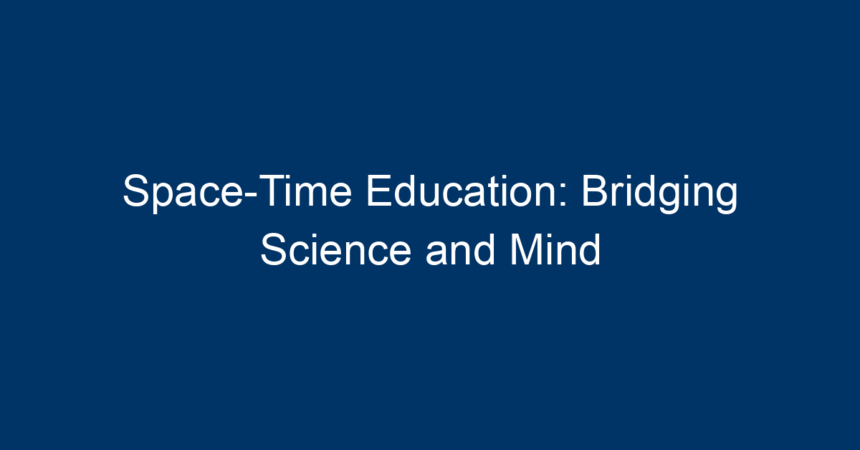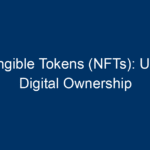In a rapidly evolving world, the intersection of science and education often presents a fascinating frontier that can redefine our understanding of knowledge. Space-time education is emerging as a transformative approach that merges scientific principles with pedagogical strategies to enhance learning experiences. This innovative concept not only deepens our comprehension of complex theories but also cultivates critical thinking and creativity among students. In this article, we’ll explore the various dimensions of space-time education and how it serves to bridge the gap between science and the human mind.
Understanding Space-Time Education
What is Space-Time Education?
Space-time education is an innovative educational framework that leverages concepts from physics—specifically the theories of space and time—to develop curricula that foster holistic understanding across disciplines. By integrating these scientific principles into educational practices, space-time education aims to create a learning environment that encourages students to navigate complex ideas, make connections, and apply their knowledge in real-world scenarios.
The Importance of Bridging Science with Education
In today’s technology-driven landscape, the ability to grasp and apply scientific concepts is critical. Space-time education facilitates this understanding by using real-world analogies from physics, such as the idea of dimensions and the relativity of time. By incorporating these elements, educators can create a more engaging learning experience that resonates with students’ everyday lives, making science not just a subject but a framework for understanding their environment.
The Core Principles of Space-Time Education
1. Interconnectivity
One of the fundamental principles of space-time education is interconnectivity. This concept emphasizes the relationships between various scientific disciplines—like physics, biology, and chemistry—and how they inform one another. By teaching students to see these connections, educators can help them develop a more comprehensive and multifaceted understanding of complex topics.
Example: Integrating Mathematics and Physics
By illustrating how mathematical equations describe physical phenomena—such as gravity or energy transfer—students gain insight into both subjects simultaneously. This cross-disciplinary approach enhances comprehension and retention, making learning more effective.
2. Experiential Learning
Experiential learning is central to space-time education, allowing students to engage with content through hands-on experiences. This principle encourages experimentation, observation, and the application of theoretical concepts in practical situations.
Example: Learning Through Simulations
Teachers might use virtual labs or simulations that allow students to manipulate variables in a controlled environment, exploring concepts such as time dilation or the curvature of space. These interactive experiences not only solidify understanding but also spark curiosity and motivation.
3. Critical Thinking and Problem-Solving
Space-time education promotes critical thinking by encouraging students to question assumptions and explore alternative perspectives. By integrating real-world problems and scenarios, educators can foster a problem-solving mindset that prepares students for the challenges they will face beyond the classroom.
Example: Projects on Climate Change
Incorporating projects that address climate change, students can investigate and debate various solutions, considering factors such as scientific data, socioeconomic impacts, and ethical implications. This holistic approach enhances interdisciplinary understanding and cultivates informed, engaged citizens.
The Role of Technology in Space-Time Education
1. Digital Resources
The rise of technology has drastically altered the education landscape, making it easier to implement space-time education. Online platforms, simulations, and educational apps can provide instant access to resources that allow for in-depth exploration of scientific concepts.
2. Virtual Reality (VR) and Augmented Reality (AR)
VR and AR technologies present exciting opportunities in space-time education. By immersing students in interactive learning environments, these technologies facilitate an experiential understanding that traditional methods often lack.
Example: Exploring the Universe
Imagine students donning VR headsets and exploring the outer reaches of the universe. Such an experience not only deepens their understanding of space but also encourages them to think critically about the nature of reality, perception, and the universe’s complexities.
Challenges in Implementing Space-Time Education
1. Curriculum Development
While space-time education offers numerous benefits, developing an effective curriculum can be challenging. Educators must balance essential content with innovative approaches, ensuring that students receive a comprehensive education without sacrificing depth.
2. Teacher Training
For space-time education to flourish, educators must be equipped with the knowledge and skills necessary to implement this approach effectively. Professional development programs can provide teachers with the tools to integrate scientific concepts creatively into their lessons.
Real-World Applications of Space-Time Education
1. Cross-Disciplinary Programs
Many educational institutions are already recognizing the value of space-time education by implementing cross-disciplinary programs. These initiatives unite subjects such as science, technology, engineering, and mathematics (STEM) with the arts (STEAM), promoting a more comprehensive curriculum that prepares students for the complexities of the modern world.
2. Collaboration with Industry
Partnerships between educational institutions and industries can create practical opportunities for students to apply their learning in real-world contexts. By engaging with professionals in various fields, students gain firsthand experience of how scientific principles operate in the workforce, making the learning process more relevant and meaningful.
Conclusion: Taking Action Towards Space-Time Education
Space-time education provides a compelling framework that bridges the gap between scientific theory and practical application. As we strive to equip the next generation with the skills they need to thrive, it is essential to embrace this innovative approach. Here are some actionable insights to integrate space-time education into your learning environment:
-
Incorporate Interdisciplinary Themes: Develop units that link various subjects, allowing students to explore connections between science, math, and the arts.
-
Utilize Technology: Take advantage of digital tools and resources that facilitate experiential learning, such as simulations, VR, and AR.
-
Encourage Critical Inquiry: Promote a classroom culture that values questioning and discussion, enabling students to explore different perspectives on scientific issues.
- Foster Collaboration: Create partnerships with local industries that allow students to engage in real-world projects, enhancing their understanding of scientific concepts in practical contexts.
By prioritizing space-time education, educators and institutions can cultivate a generation that not only understands scientific principles but is also adept at critical thinking, problem-solving, and creativity. Together, let’s embrace this innovative approach to foster deeper learning and prepare students for the complexities of a dynamic world.




